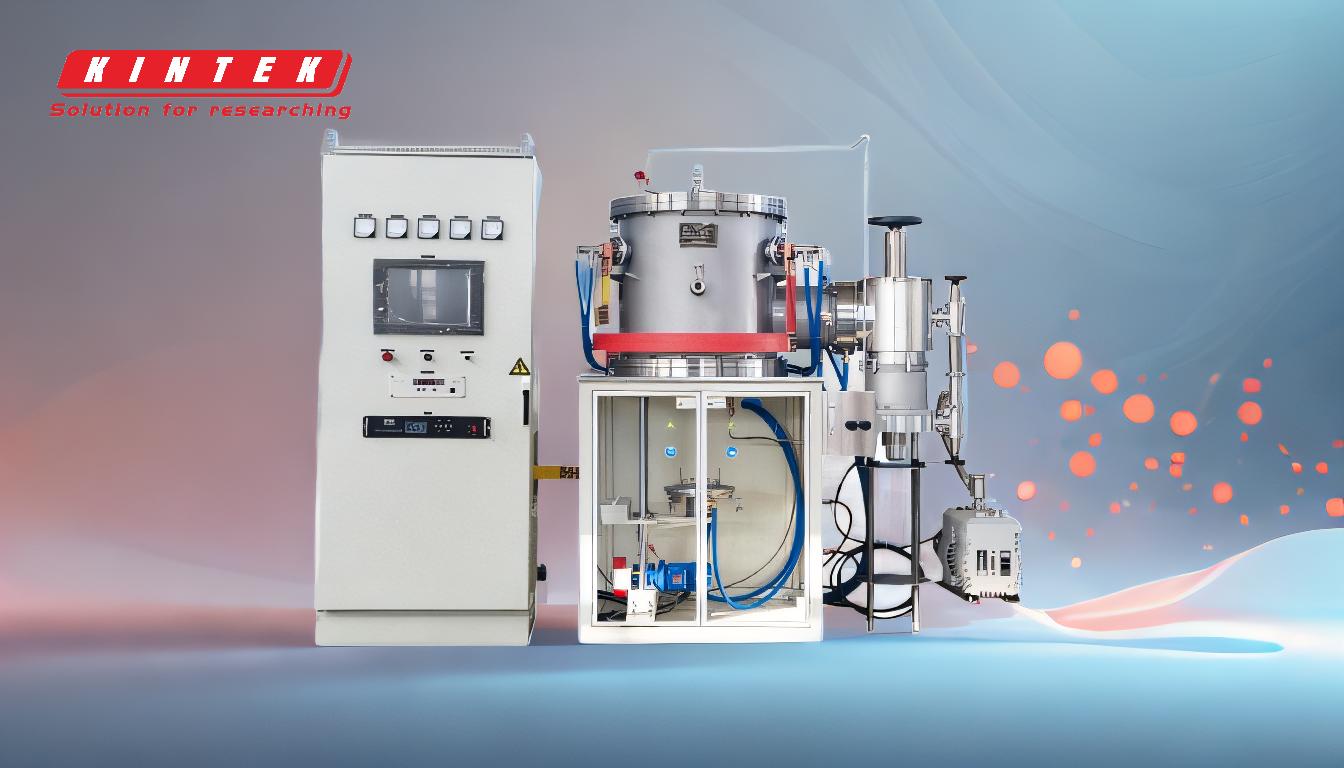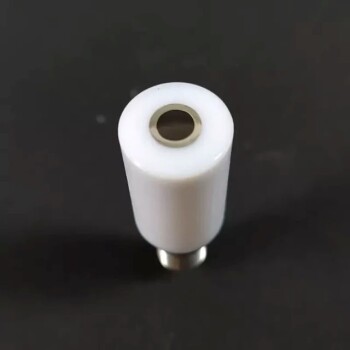A common and easily understood example of induction heating is an induction cooktop. Unlike a traditional electric or gas stove, an induction cooktop uses a powerful, high-frequency magnetic field to directly heat the pot or pan itself. This is why the cooking surface stays relatively cool while the pan gets hot almost instantly, demonstrating the technology's core principles of speed and targeted efficiency.
The central concept to grasp is that induction heating is not about applying an external flame or hot surface. It is a non-contact method that uses magnetic fields to generate heat directly inside a conductive material, offering unparalleled speed, precision, and cleanliness over traditional heating methods.
How Induction Heating Actually Works
To understand its applications, we must first understand the principle. The process is a combination of two fundamental physics concepts: electromagnetic induction and Joule heating.
The Principle of Electromagnetic Induction
An induction heater uses a coil of wire through which a high-frequency alternating current (AC) is passed. According to the laws of electromagnetism, this alternating current creates a powerful and rapidly changing magnetic field in the space around the coil.
Generating Heat with Eddy Currents
When an electrically conductive object, like a piece of metal or a cast-iron skillet, is placed inside this magnetic field, the field induces small, circular electrical currents within the metal. These are known as eddy currents.
The Role of Material Resistance
These eddy currents flow against the inherent electrical resistivity of the metal. This resistance to the current flow generates friction and intense, localized heat—a phenomenon called Joule heating. In essence, the material heats itself from the inside out, without any physical contact from a heat source.
Key Applications Across Industries
While the cooktop is a familiar example, the true power of induction heating is realized in demanding industrial and technical environments.
In Your Home: The Induction Cooktop
The domestic cooktop showcases the key user benefits. It provides rapid heating, superior energy efficiency because heat isn't wasted into the surrounding air, and increased safety as the glass-ceramic surface doesn't get as hot as a conventional electric element.
In Manufacturing: Precision Metal Treatment
Induction heating is a cornerstone of modern metallurgy. It is used for surface hardening gears or engine parts, where only the outer layer needs to be durable while the core remains ductile. It is also used for brazing and welding, where its ability to deliver precise, rapid heat creates strong bonds without distorting the entire component.
In High-Tech Production: Semiconductor and Crystal Growth
In industries where purity is paramount, induction's non-contact nature is a critical advantage. It is used for Czochralski crystal growth to create the large, single-crystal silicon ingots that form the basis of microchips. Because there is no flame or heating element, there is no risk of contaminating the ultra-pure material.
Understanding the Trade-offs and Limitations
While powerful, induction heating is not a universal solution. Understanding its limitations is key to using it effectively.
Material Dependency
The most significant limitation is that induction heating only works directly on electrically conductive materials. It is highly effective on metals like iron, steel, and copper but cannot heat glass, ceramics, or most plastics unless they are paired with a conductive element.
Equipment and Coil Design
Industrial induction systems represent a significant investment in specialized power electronics. Furthermore, the efficiency of the heating process is highly dependent on the shape and proximity of the induction coil to the part being heated, often requiring custom-designed coils for specific applications.
Limited to Shallow Heating Depths
The induced eddy currents tend to flow near the surface of the material, a phenomenon known as the "skin effect." While this is ideal for surface hardening, it makes induction heating less suitable for uniformly heating very large, thick metal objects all the way through.
Making the Right Choice for Your Goal
Selecting a heating method depends entirely on the specific requirements of your task for speed, precision, and purity.
- If your primary focus is speed and efficiency: Induction is ideal for rapid heating cycles, such as in a high-volume manufacturing line or simply boiling water quickly.
- If your primary focus is precision and control: Use induction for tasks like hardening a specific section of a component or for medical applications requiring highly localized heat.
- If your primary focus is cleanliness and purity: Induction is superior for processes where contamination is unacceptable, such as in semiconductor manufacturing or medical device bonding.
Ultimately, induction heating provides a powerful tool when you need fast, clean, and highly controlled thermal energy delivered exactly where it is needed.
Summary Table:
| Feature | Induction Heating | Traditional Heating |
|---|---|---|
| Speed | Extremely Fast (Heats from within) | Slower (Heat transfers from outside) |
| Efficiency | High (Directly heats the object) | Lower (Heat is lost to surroundings) |
| Precision | Excellent (Targeted, localized heat) | Less Precise (Broader heat zone) |
| Cleanliness | High (Non-contact, no combustion) | Lower (Risk of contamination) |
| Material Limitation | Requires Conductive Materials (e.g., metals) | Works on Most Materials |
Need a fast, clean, and precise heating solution for your lab or production line?
KINTEK specializes in high-performance lab equipment, including advanced induction heating systems. Whether you are working on metal treatment, brazing, or require a contamination-free process for sensitive materials, our solutions deliver unmatched speed, control, and efficiency.
Contact our experts today to discuss how KINTEK's induction heating technology can enhance your specific application.
Related Products
- Lab-Scale Vacuum Induction Melting Furnace
- Non Consumable Vacuum Arc Induction Melting Furnace
- 600T Vacuum Induction Hot Press Furnace for Heat Treat and Sintering
- 1200℃ Controlled Atmosphere Furnace Nitrogen Inert Atmosphere Furnace
- 1400℃ Controlled Atmosphere Furnace with Nitrogen and Inert Atmosphere
People Also Ask
- What is VIM in metallurgy? A Guide to Vacuum Induction Melting for High-Performance Alloys
- What are the advantages of induction melting? Achieve Faster, Cleaner, and More Controlled Metal Melting
- What is vacuum arc melting technique? Discover the Precision of Vacuum Induction Melting
- How does induction work in a vacuum? Achieve Ultra-Pure Metal Melting with VIM
- What is vacuum induction melting used for? Creating Ultra-Pure Metals for Demanding Industries



















